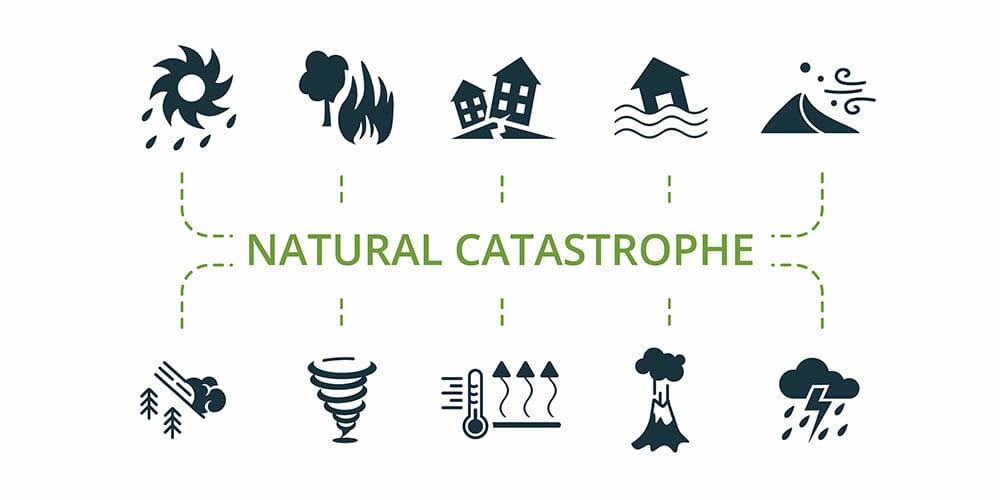3 Things Your School District Needs to Consider When Planning for Natural Disasters
It is imperative schools plan for severe weather as it is estimated that 94% of students live in communities at risk for natural disasters.

(Photo: Mariia, Adobe Stock)
The views expressed by guest bloggers and contributors are those of the authors and do not necessarily represent the views of, and should not be attributed to, Campus Safety magazine.
After Hurricane Katrina, students in New Orleans experienced disruptions to schooling and high rates of absenteeism. An estimated 196,000 public school students in Louisiana — almost one-fourth of the student population — had to change schools and 50,000 students did not attend school during the remainder of the academic year. In addition, those students suffered mental health challenges, behavioral problems and academic setbacks.
Natural disasters like hurricanes and floods can lead to severe, uncontrollable and unpredictable devastation, affecting millions of children each year. In fact, 94% of children in the U.S. live in communities at risk for natural disasters.
Disaster planning for schools and districts is just as important as planning instruction. While schools are places of learning, they also serve a broader function in local communities. Therefore, it’s imperative that educators are capable of leading students out of danger and towards safety.
Since natural disasters can strike at any time, educators need regular training and professional development to reinforce confidence and familiarity with their roles and responsibilities.
Below are three strategies for schools and districts to consider when planning for natural disasters.
1. Provide Access to Healthy Meals
Often, food becomes contaminated in natural disasters. Plus, poor sanitation and unsafe storage conditions make cooking near impossible even if there’s food available. Access to consistent, healthy meals is important during natural disasters, especially when children are at an increased risk of malnutrition, shock and other trauma.
Part of a school or district’s natural disaster plan should include plans for feeding children and their families. According to the Food Research & Action Center, school nutrition departments can provide meals through alternative nutrition programs during natural disasters. In addition, schools and districts have more flexibility around requirements when a major disaster is declared. For example, schools and districts can provide free school breakfast and lunch by working with the U.S. Department of Agriculture (USDA) and state child nutrition agencies. Plus, children displaced from their homes are also eligible for free school meals.
For example, when Hurricane Florence struck Wilmington, N.C., damages from the hurricane cost Brunswick County School District between $1.8 million and $2 million. Due to the damages, the district transitioned into the Community Eligibility Provision (CEP) offered by the USDA under its National School Lunch Program to help feed students and their families recovering from the devastation.
Those meals make a huge difference in children’s lives and provide some consistency and normalcy in a stressful environment.
2. Transition to Cloud-Based Programs and Solutions
Natural disasters can cause damage to the structural support of school buildings and destroy irreplaceable student files and information. Whether it’s hurricanes, flooding, or tornadoes, there’s always a risk of losing important items.
To avoid this, school technology officials recommend schools and districts move important student files, information and programs to the cloud. The cloud helps keep important information safe and also helps schools and districts get back on their feet after a natural disaster. Items in the cloud are accessible from anywhere, so if a school building is deemed unusable, or students and their families lose their homes, the cloud ensures students and educators still have access to important information.
By partnering with certain organizations, schools and districts have access to multiple backups and recovery options in case of a natural disaster, ensuring the data recovery process is quick and efficient.
3. Put Together a Clear Communication Plan
Clear communication after a natural disaster is one of the most crucial aspects of disaster response because it connects affected students, families, educators and local communities. Often, there’s a sense of confusion and panic before, during, and after a natural disaster. Clear communication ensures everyone is on the same page and informed.
School leaders should reinforce best practices before natural disasters and update colleagues on the communication channels available and what to do when the power or cellular service is unreliable.
In a natural disaster, schools and districts can leverage their systems already in place to send important information through text messages, emails, school websites and social media. However, when doing so, it’s essential to consider which channel is likely to reach the most people — whether it’s Twitter or a text message to families.
Create a Web of Support
Natural disasters are beyond our control and can strike at any time, making it crucial that schools and districts are prepared to respond by having a plan in place. By ensuring access to meals, transitioning to the cloud and creating a clear communication plan, we can protect our students and provide support when it’s needed the most.
Prepping for natural disasters is challenging and time-consuming but it ensures local communities remain strong and rebuild together.
Tim Chadwick is the Chief Information Officer for LINQ, a suite of tools that helps K-12 administrators improve efficiency, optimize performance, and manage compliance.
If you appreciated this article and want to receive more valuable industry content like this, click here to sign up for our FREE digital newsletters!
 Leading in Turbulent Times: Effective Campus Public Safety Leadership for the 21st Century
Leading in Turbulent Times: Effective Campus Public Safety Leadership for the 21st Century
This new webcast will discuss how campus public safety leaders can effectively incorporate Clery Act, Title IX, customer service, “helicopter” parents, emergency notification, town-gown relationships, brand management, Greek Life, student recruitment, faculty, and more into their roles and develop the necessary skills to successfully lead their departments. Register today to attend this free webcast!













